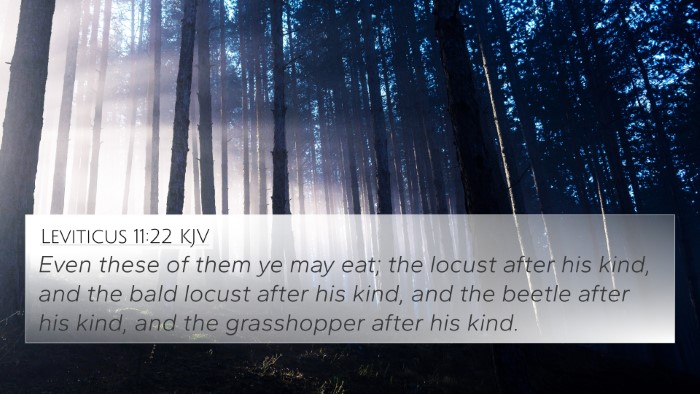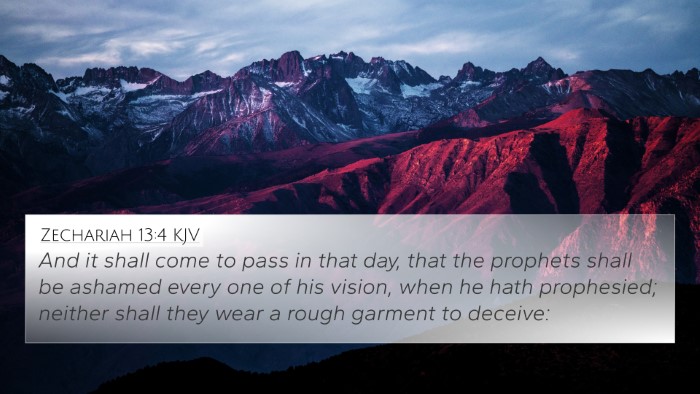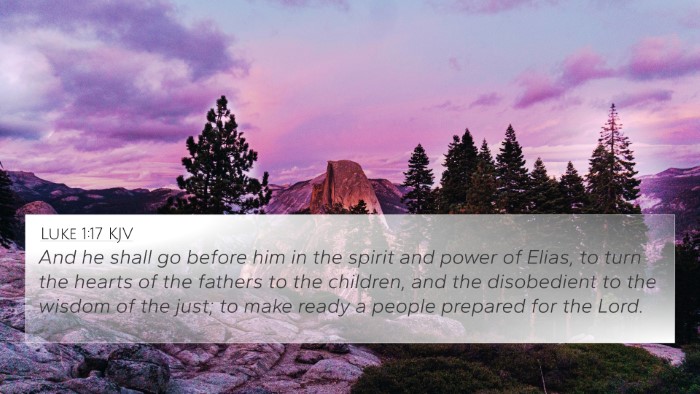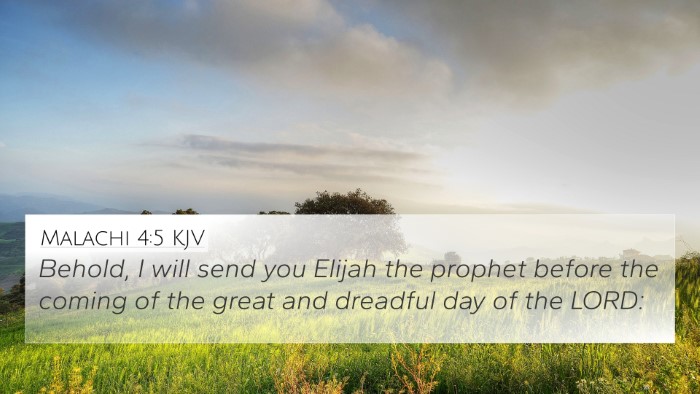Understanding Matthew 3:4
Matthew 3:4 reads: "And the same John had his raiment of camel's hair, and a leathern girdle about his loins; and his meat was locusts and wild honey." This verse introduces John the Baptist, a key figure in the New Testament, and sets the stage for his role in preparing the way for Jesus Christ. The verse highlights several important aspects regarding John’s identity, lifestyle, and mission.
John the Baptist’s Identity
John, often referred to as a prophet, appears in the wilderness. His attire of camel’s hair and a leather belt symbolizes his ascetic lifestyle, reflecting his prophetic calling reminiscent of Elijah (2 Kings 1:8). Albert Barnes notes that this attire was intentionally chosen to emphasize his humility and separation from worldly concerns. In biblical times, prophets often dressed in simple, austere ways to signify their detachment from materialism.
Symbolism of Attire
According to Matthew Henry, the garments of camel's hair represent that John did not seek comfort or luxury. This reflects a stark contrast to the religious leaders of his time, who were known for their elaborate clothing and lifestyles. John’s appearance was a tangible expression of his message of repentance and preparation for the coming Messiah.
Dietary Choices
The mention of John’s diet—locusts and wild honey—further illustrates his simplicity and economical lifestyle. Adam Clarke points out that locusts were permissible according to Jewish dietary laws (Leviticus 11:22), and wild honey signifies a reliance on natural provisions. This choice of food symbolizes a life of dependence on God’s provision rather than societal luxuries.
Spiritual Significance
John the Baptist’s austere lifestyle is highly significant as it serves to illustrate his calling. He was to prepare the way for Jesus, calling people to repentance (Matthew 3:2). The simplicity of his life conveyed the radical nature of his message—that the kingdom of heaven was at hand, and one must turn away from sin to be part of it.
Cross-References
Understanding Matthew 3:4 deepens when we explore its connections with other biblical texts. Here are some relevant Bible verse cross-references:
- 2 Kings 1:8: Comparison to Elijah's attire enhances the understanding of John's prophetic role.
- Isaiah 40:3: John’s mission is to prepare the way for the Lord, as depicted in prophetic literature.
- Matthew 11:7-11: Jesus later affirms John’s role, highlighting his significance among prophets.
- Mark 1:6: A similar description of John emphasizes his unique lifestyle and prophetic mission.
- Luke 1:15: This passage discusses the holy calling of John, highlighting his destiny before birth.
- Matthew 3:1: Provides context to John’s preaching and the message of repentance he proclaimed.
- Acts 19:4: Paul references John the Baptist in the context of repentance and subsequently points to faith in Jesus.
Thematic Connections
When considering the thematic Bible verse connections, John's lifestyle and mission resonate with the call to repentance found throughout scripture. This theme ties back to the Old Testament, where prophets often called Israel to turn from sin (see Jeremiah 3:12-13). The call for repentance is echoed in the New Testament, particularly by Jesus following John’s ministry (Matthew 4:17).
Tools for Bible Cross-Referencing
Engaging with Matthew 3:4 invites one to employ various tools for Bible cross-referencing. Using a Bible concordance or a cross-reference guide can facilitate a deeper study of how different texts interrelate:
- Explore cross-reference Bible study methods to uncover more connections within the text.
- Utilize a Bible cross-reference system to trace themes and patterns.
- Consider the links between the Old and New Testaments to identify God's continuous call to repentance.
Conclusion
Matthew 3:4 offers profound insights into the life and mission of John the Baptist. By understanding the significance of his choices in attire and diet, we can appreciate his role as a forerunner to Christ. This verse encourages reflection on the nature of true repentance and the preparation needed to receive Jesus. By leveraging cross-referencing biblical texts, one can further explore how John the Baptist's message resonates throughout scripture.













